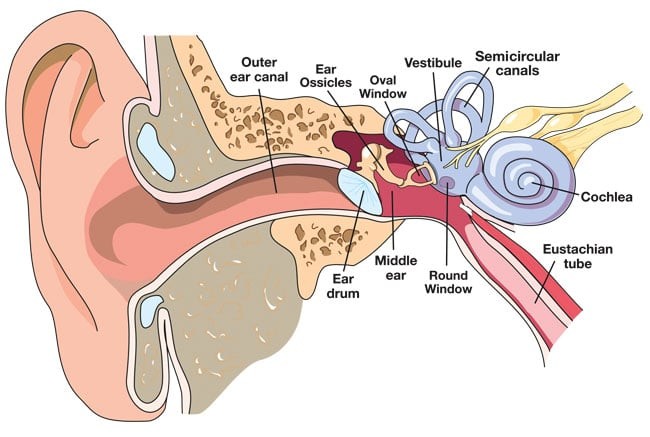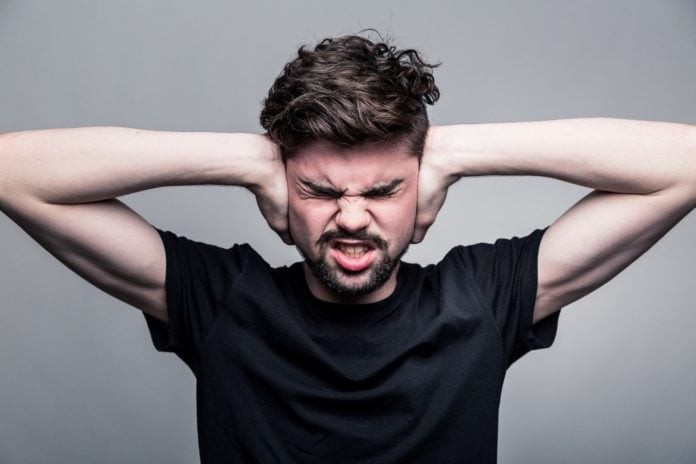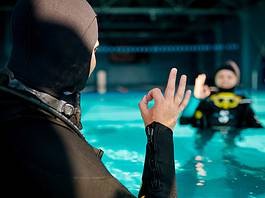Equalizing is one of the first skills that new divers learn, and after qualification, it’s something that we practice on every single dive. In time, equalisation becomes almost instinctive for many divers; but for others, it can be difficult, frustrating and even painful. In this article, we take a closer look at the issues that can make equalizing problematic and their solutions.
What is Equalizing?
The human ear is made up of three basic sections – the outer ear, the middle ear and the inner ear. Because the middle ear is a dead air space, it is the section most often affected by the pressure changes experienced during scuba diving. As we descend, the surrounding pressure increases, while the pressure in your middle ear remains the same. The imbalance can cause extreme discomfort, and if left unaddressed, ultimately results in middle ear barotrauma.
To equalise the pressure in your middle ear, it is necessary to introduce higher-pressure air from the back of the throat. This is possible because the middle ear is connected to the throat (and to the outer ear) by the Eustachian tubes. However, these narrow tubes are naturally kept closed by a one-way valve known as the Eustachian cushion. To allow air to pass through this valve from the throat, divers must open it using one of several equalisation methods.
The most common method (and the one usually taught to new divers during certification) is known as the Valsalva Maneuver. This involves pinching your nostrils together and blowing gently, thereby forcing air to move along the Eustachian tubes and into your middle ear. There are several other methods that can be used to achieve the same results including swallowing, and moving your jaw either in circles or from side-to-side.

Common Equalizing Problems
Many divers are only taught the Valsalva Maneuver. This method relies on the pressure of the air being blown from the back of your throat to open the Eustachian cushion – which is effective as long as you use it in a timely fashion. However, if you wait until discomfort occurs to try equalizing this way, it often doesn’t work. If the outside pressure becomes too great, the Eustachian cushions become “locked” shut – and no amount of air will open them. Instead, if you blow too hard, you risk causing damage to your inner ear tissues.
In this instance, the best option is to try pinching your nose and swallowing (a method known as the Toynbee Maneuver), or moving your jaw as if you’re about to yawn. These techniques use the throat muscles rather than air pressure to open the Eustachian cushion and are usually more effective if the valves are already locked shut. Of course, the easiest way to avoid this problem in the first place is to equalise before the pressure becomes too great, i.e. every few feet of your descent, or before experiencing discomfort.
For many people, equalizing problems are a matter of technique, and easily overcome by changing a few basic aspects of your descent. Start by equalizing on the surface (and even for an hour or two before your dive begins). Descending on a line can help divers to monitor the pace of their descent, and to control it if necessary. In this way, it’s easy to stop in mid-water to equalise properly before descending to greater depths; or to ascend slightly and try again if problems occur.
If you are using the Valsalva Maneuver, make sure to always descend feet first, as equalizing using this method requires considerably more force on a headfirst descent. Looking upwards can also help as the extension of your neck naturally opens your Eustachian tubes. Similarly, if you are experiencing equalizing problems with only one of your ears, angle that ear towards the surface to try and straighten the tube, thereby allowing the air to pass through more easily.
Specific Equalizing Problems
If you’ve tried all of the technique adjustments listed above and still have trouble equalizing, consider whether there are any factors that could be affecting you specifically. The most likely cause of temporary problems is congestion, whether it’s triggered by a cold, seasonal allergies, inflammation, or infections of the ears, nose or throat. Any of these conditions can cause an abnormal buildup of mucus in the Eustachian tubes, making it impossible for air to pass through and equalise your middle ear.
If you think that congestion could be the cause of your troubles, the only real option is to wait until it subsides. Although decongestants can clear your tubes temporarily, there is a risk of the medication wearing off whilst you’re underwater. In this case, mucus may start to collect again, causing you to suffer a painful and damaging reverse block during your ascent. Be aware that congestion can also be caused by alcohol, tobacco and certain foods (specifically dairy). Try cutting these factors out to see if it makes a difference.
Parents of scuba diving kids should be aware that age can have an impact on equalisation, too. Children naturally have smaller, flatter Eustachian tubes and often it can be difficult for kids to open them wide enough to allow sufficient air in. If you think that this may apply to your children, get them to descend as slowly as possible while equalizing almost constantly using several different techniques. Otherwise, you may have to wait for them to get a little older before trying diving again.
Lastly, if you have a history of infections, surgery or damage to your ears or nose, this could be the cause of your equalizing problems. In particular, a deviated nasal septum can make it difficult for air to pass effectively through the Eustachian tubes. Problems like these need to be addressed on a case-by-case basis, and your best option is to schedule an appointment with your ear, nose and throat specialist (ENT) before your next dive.




Comments are closed.